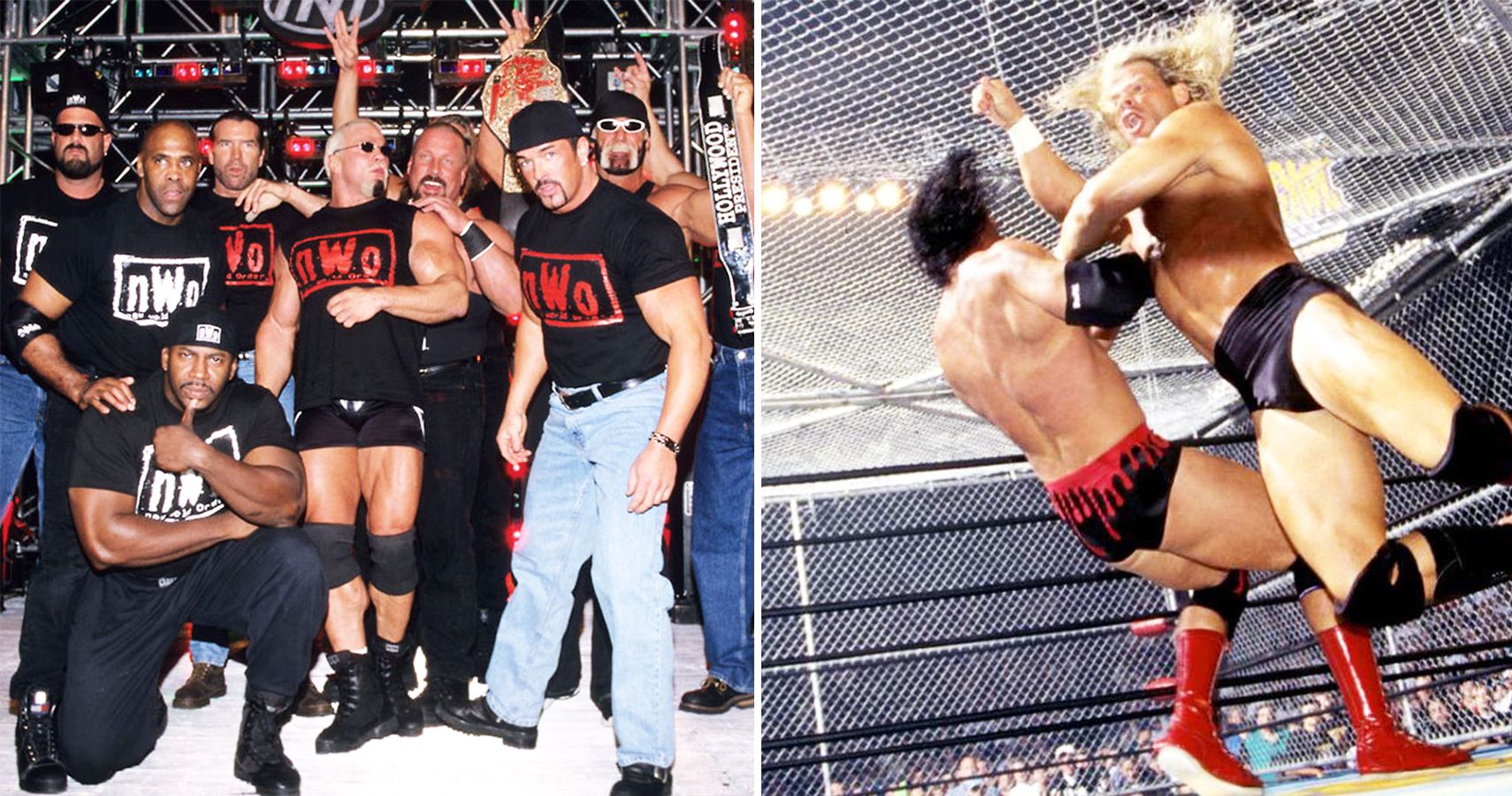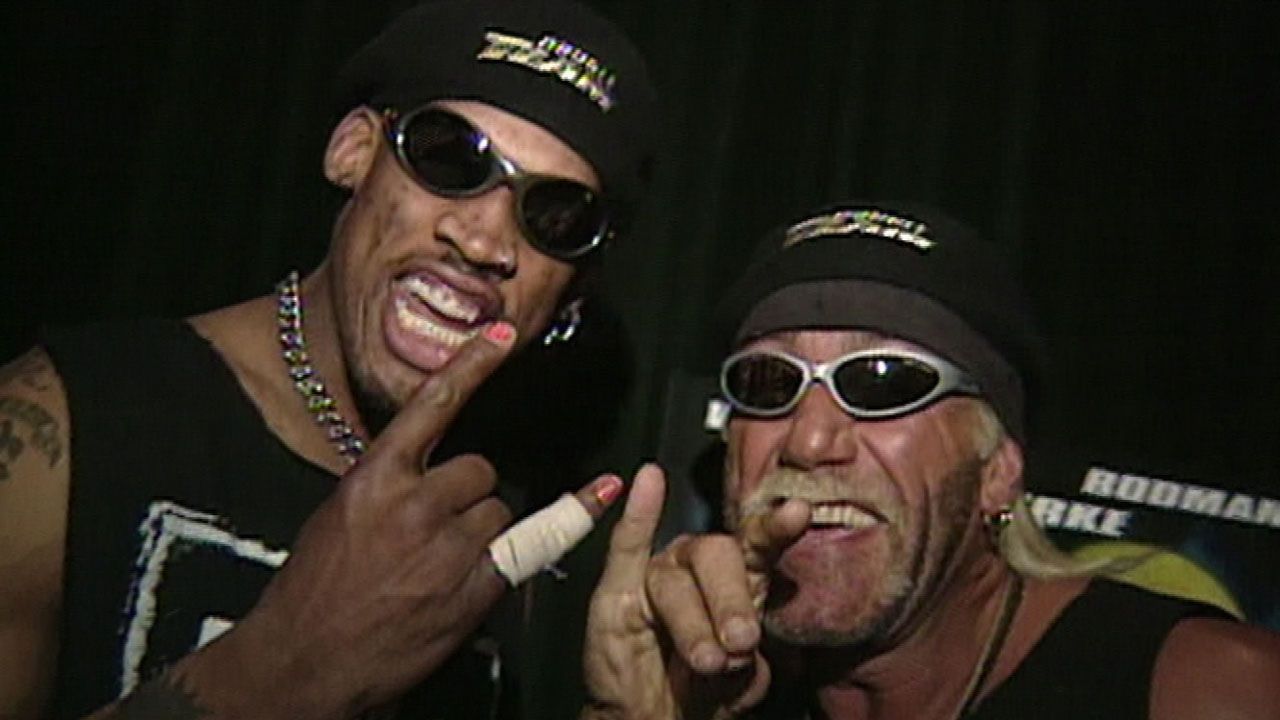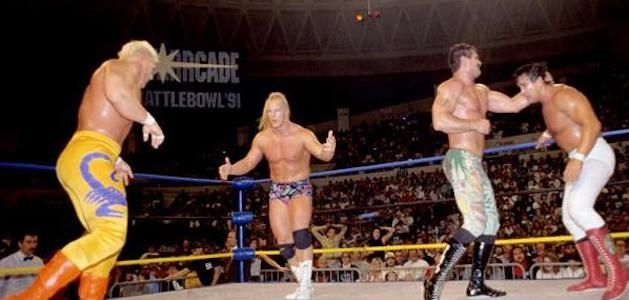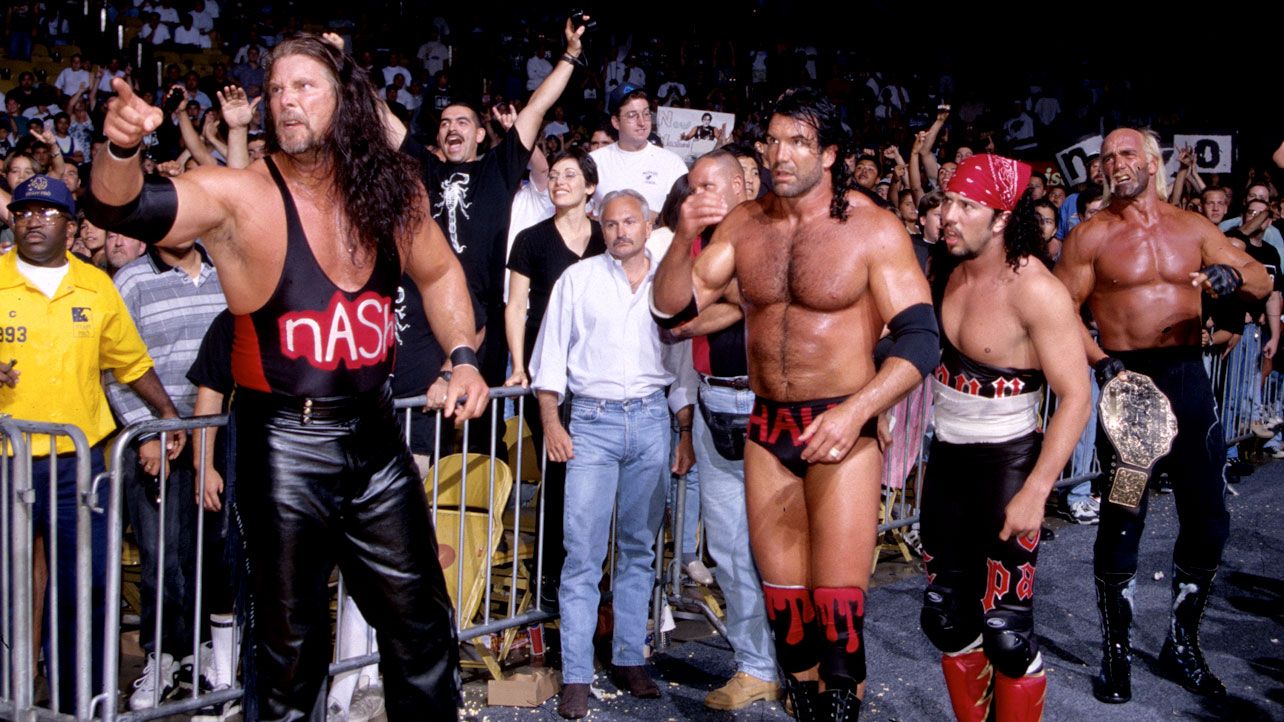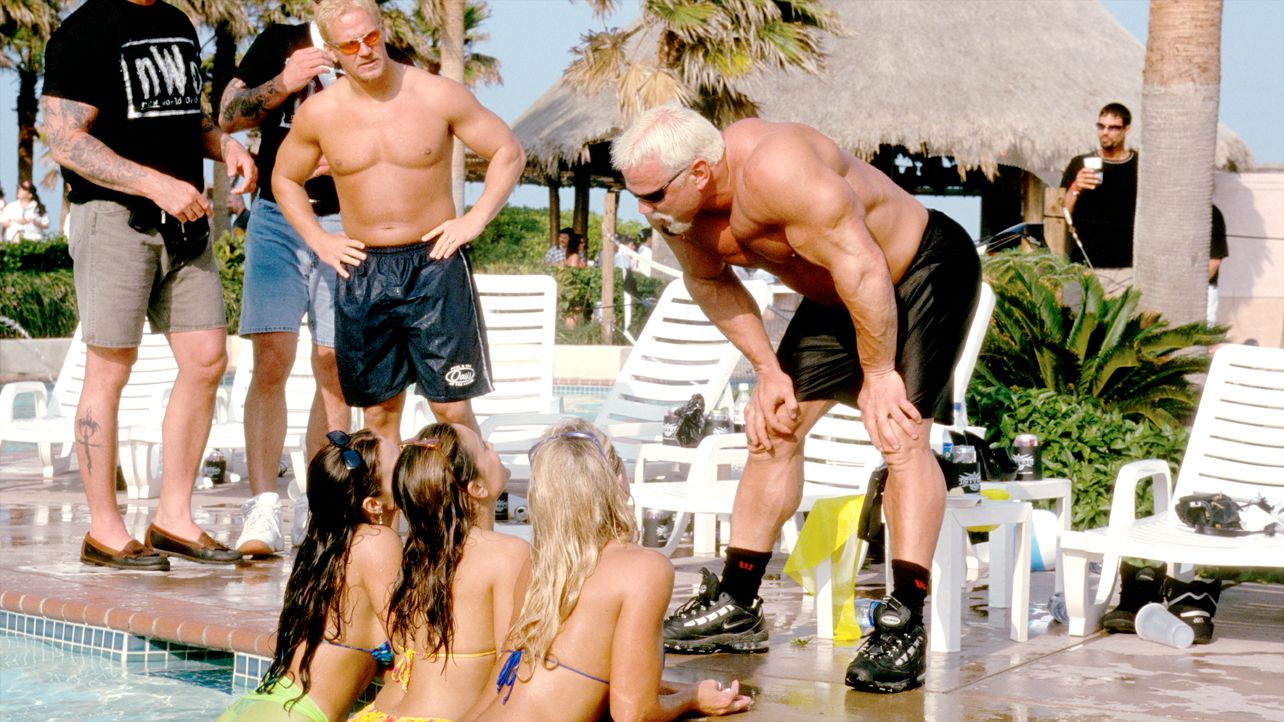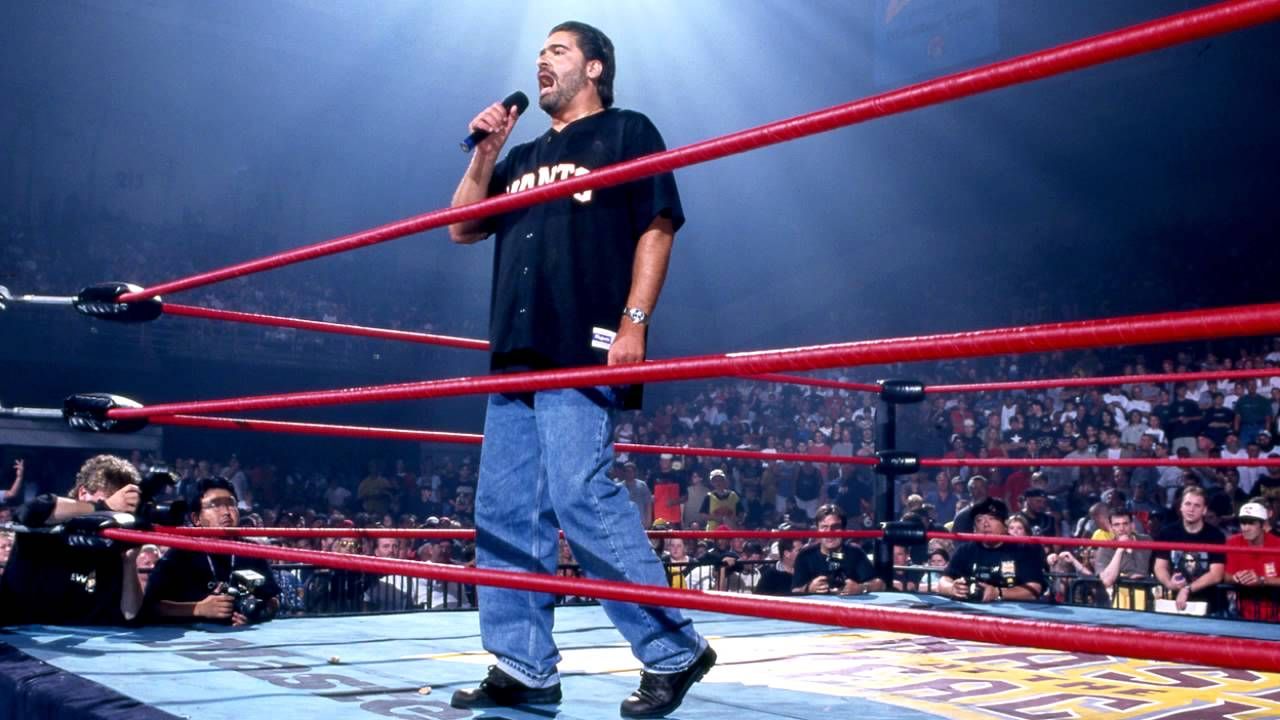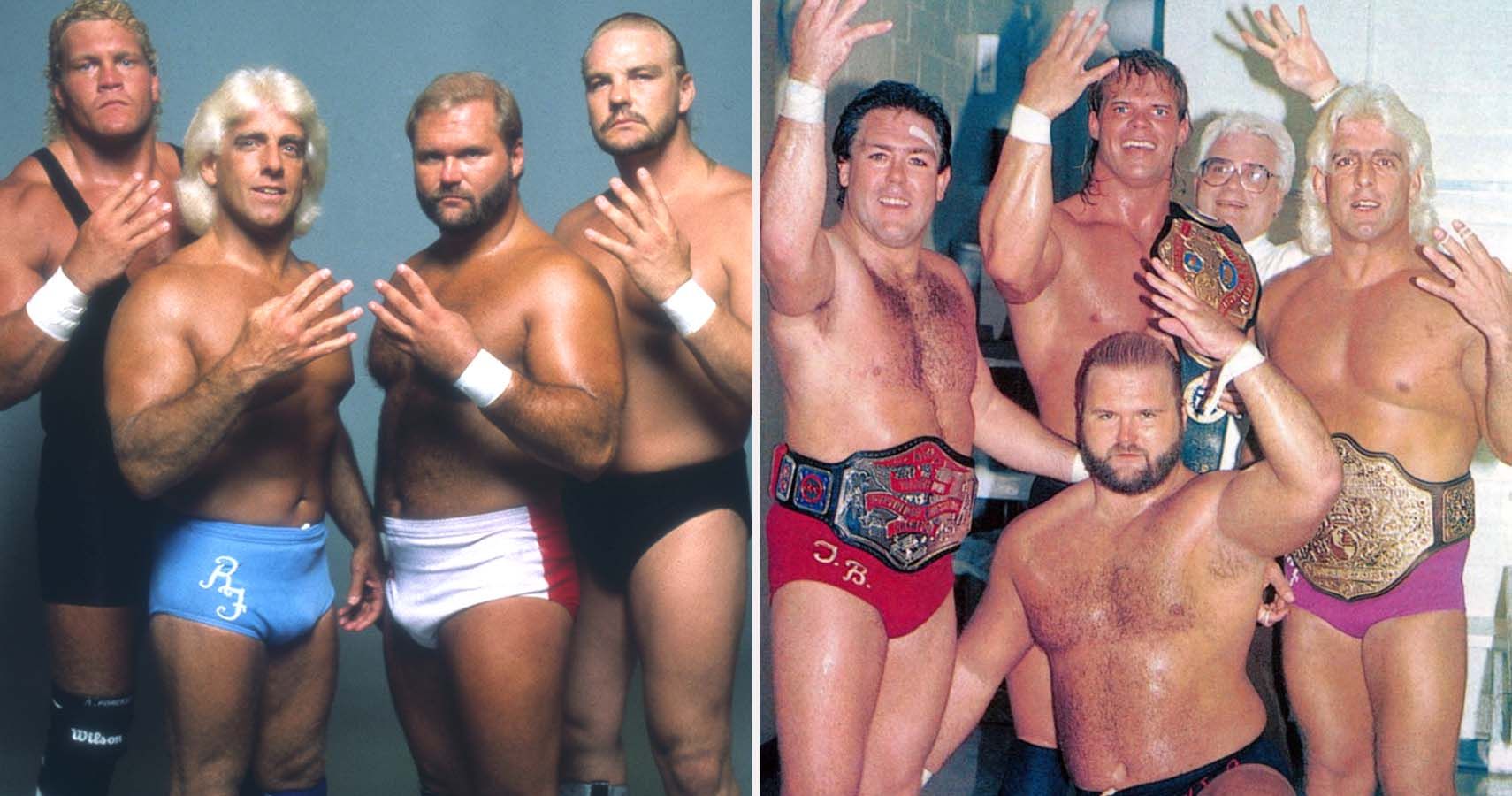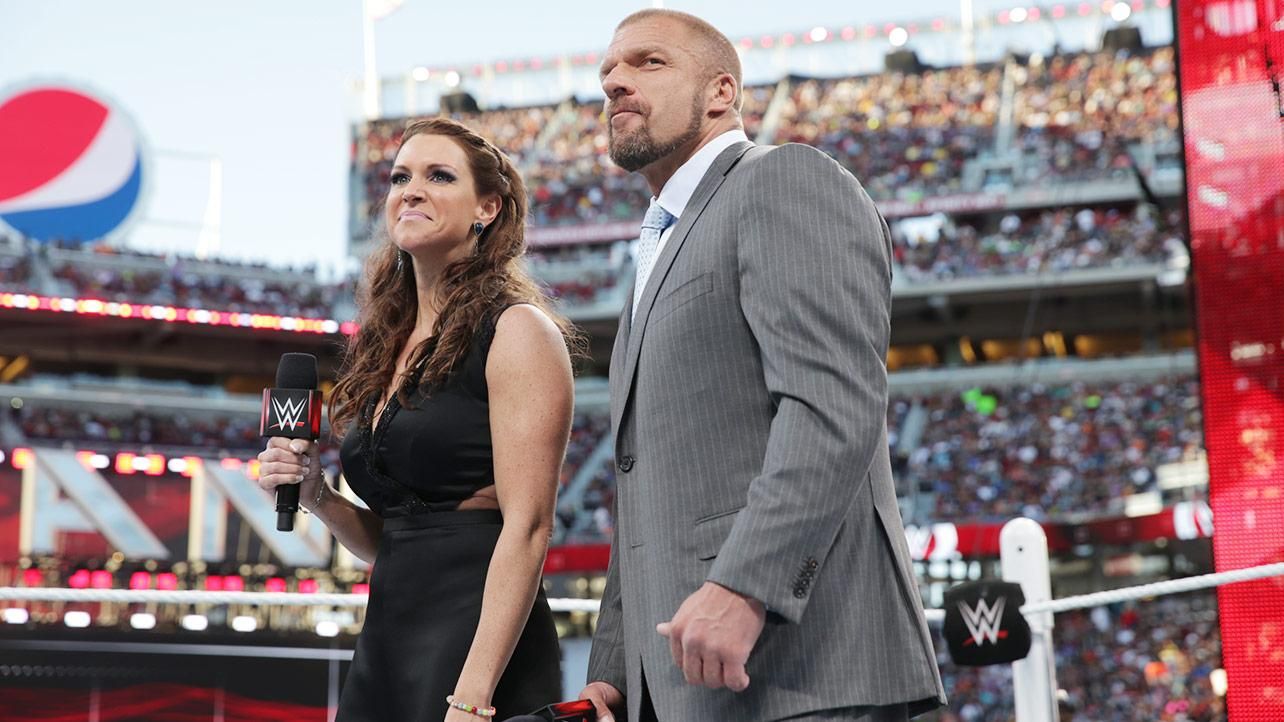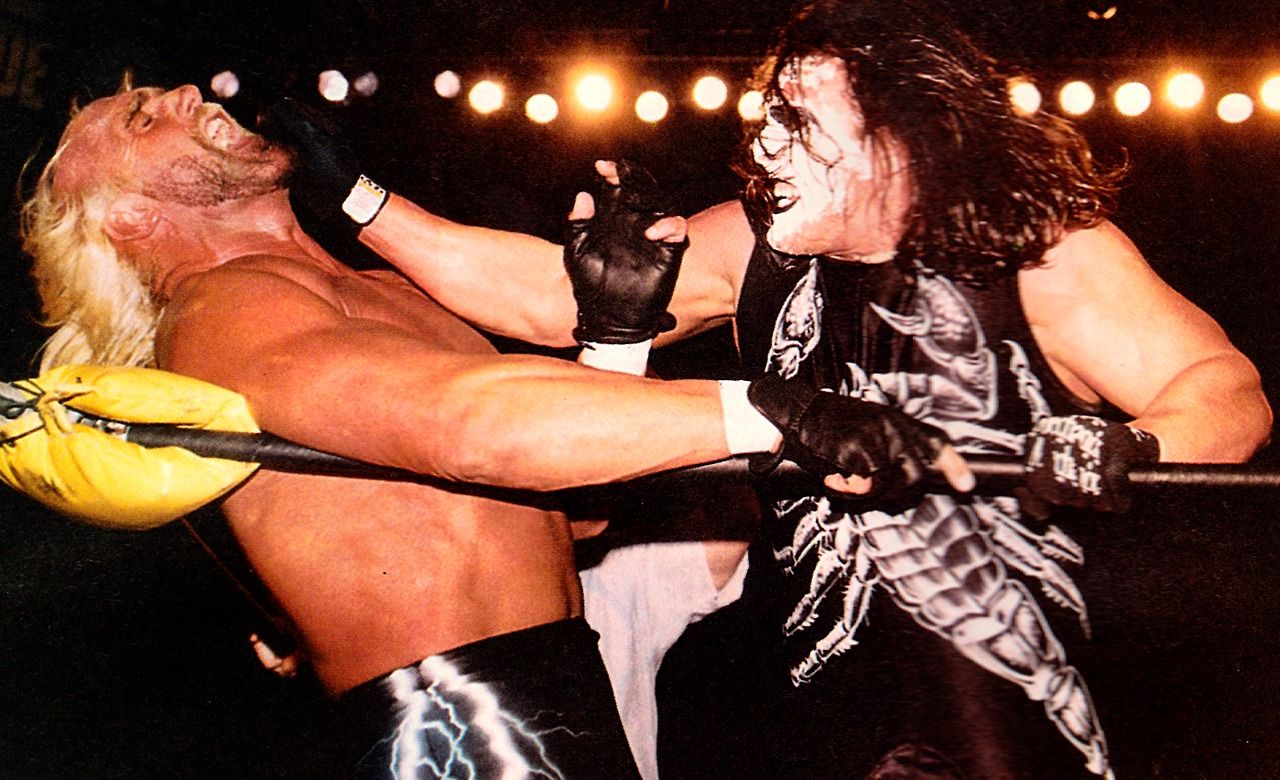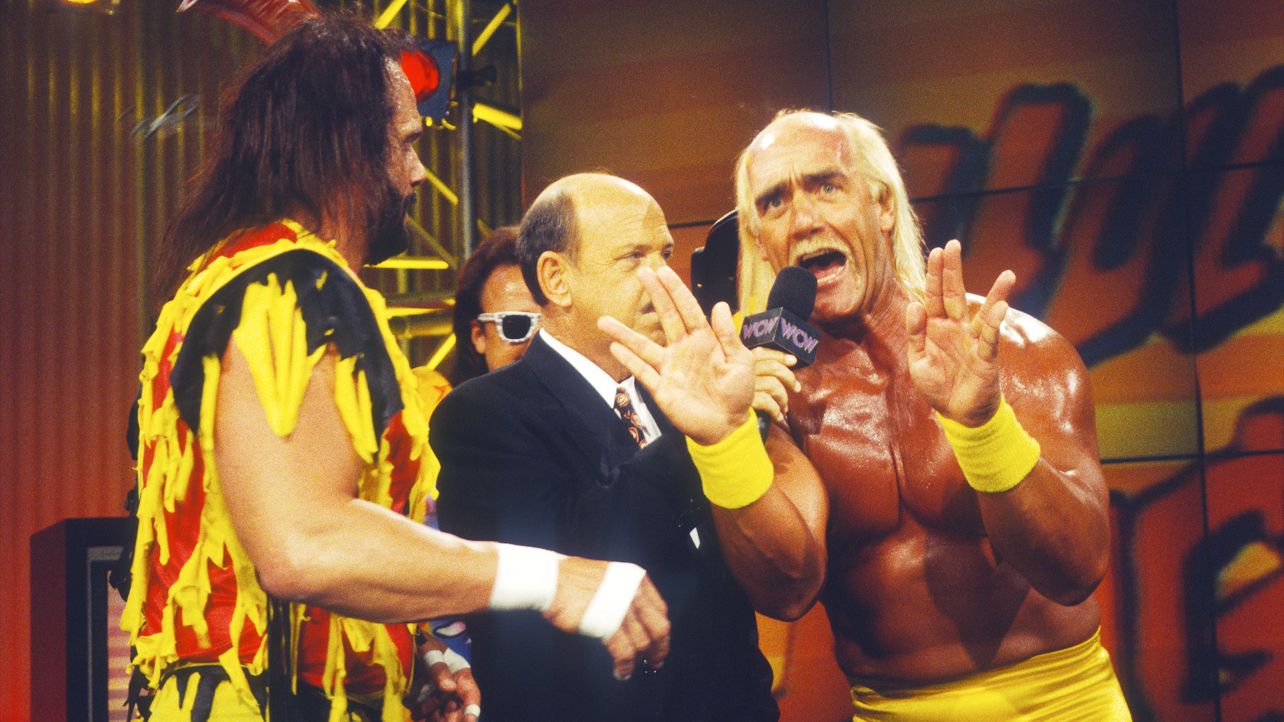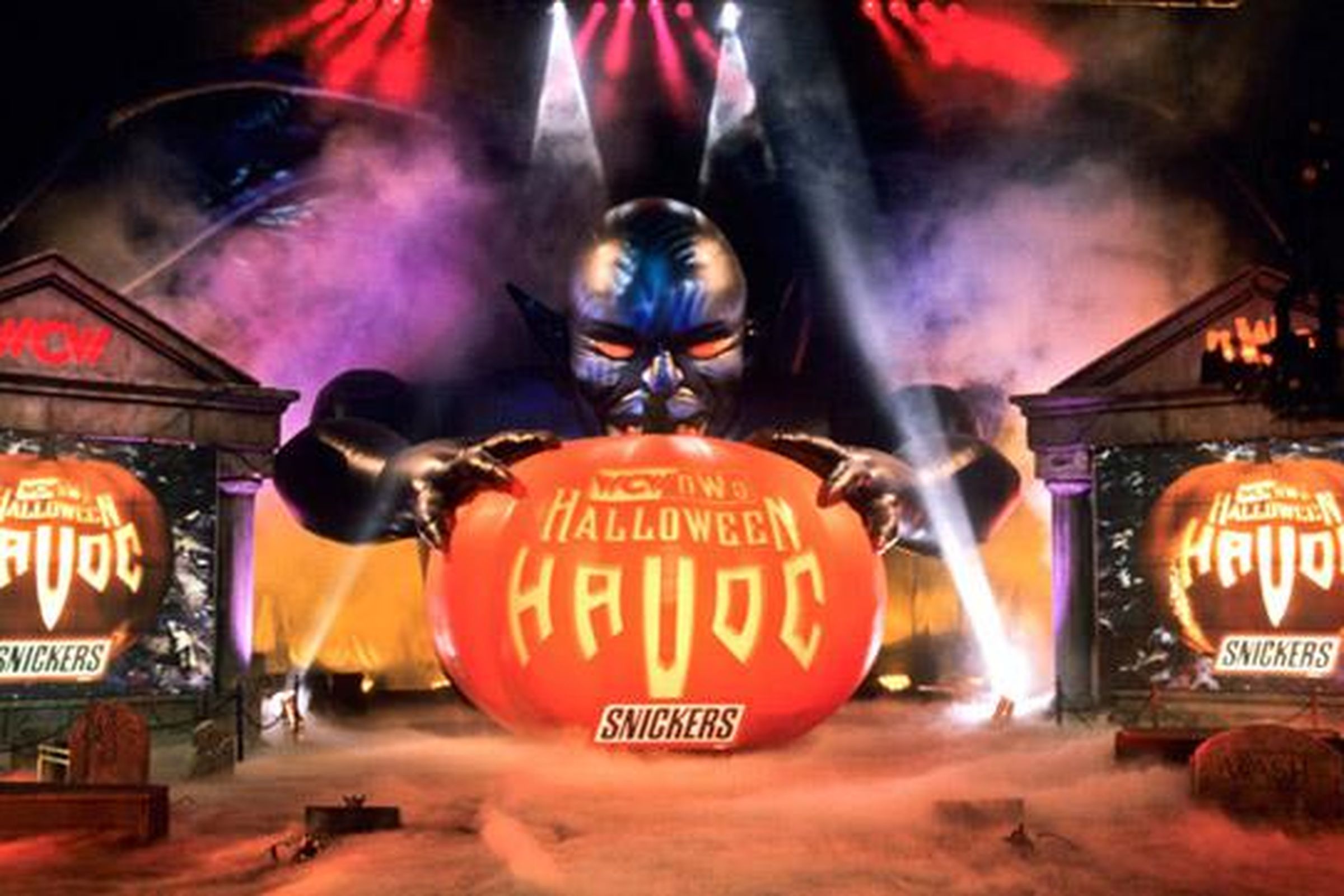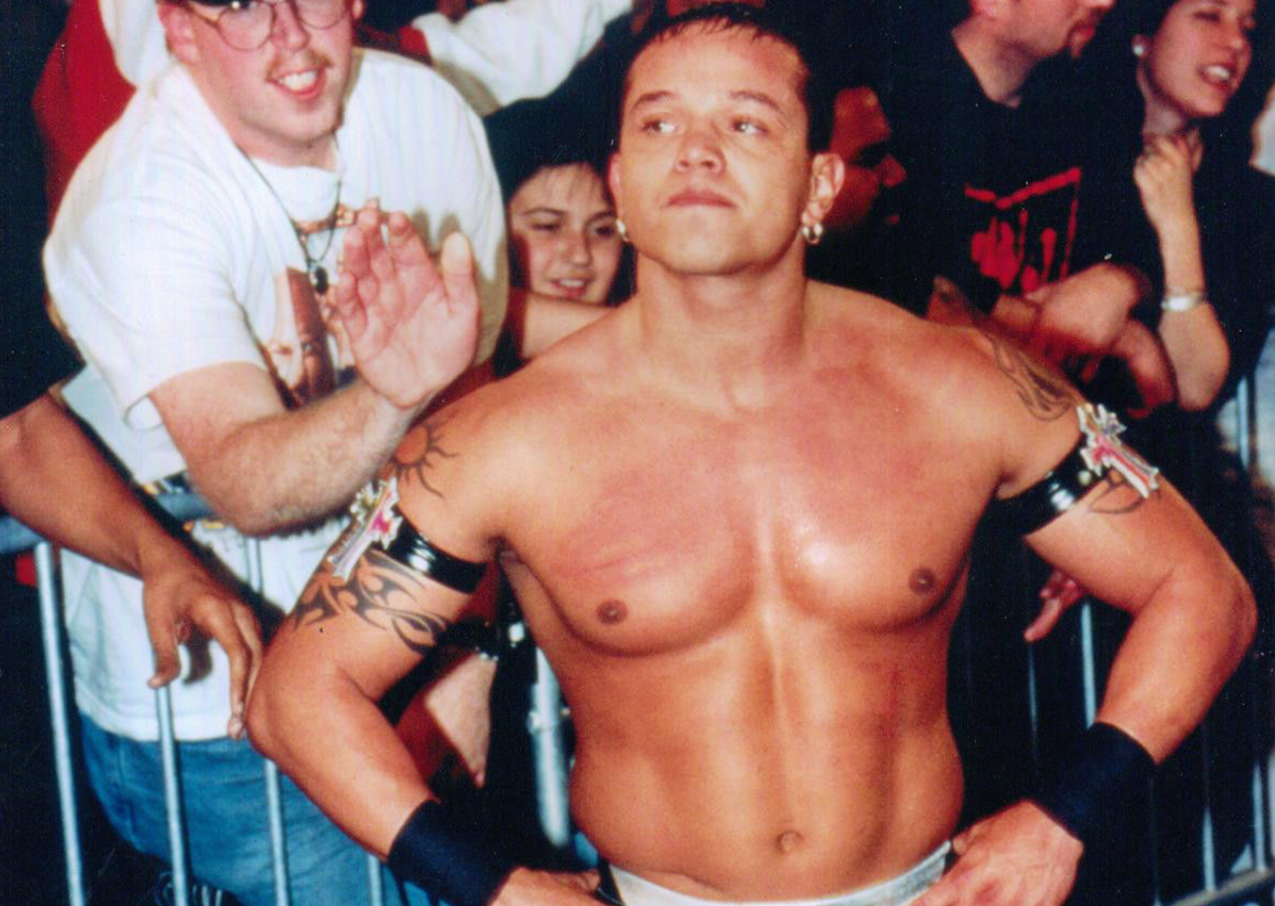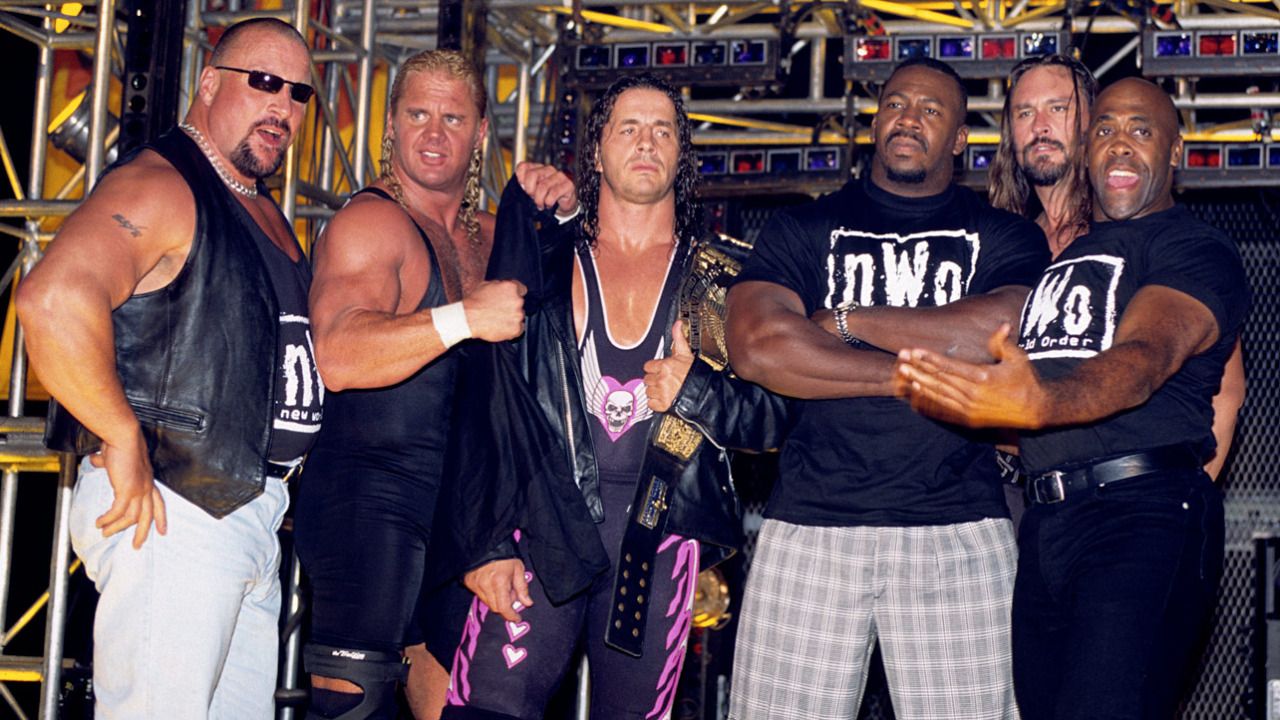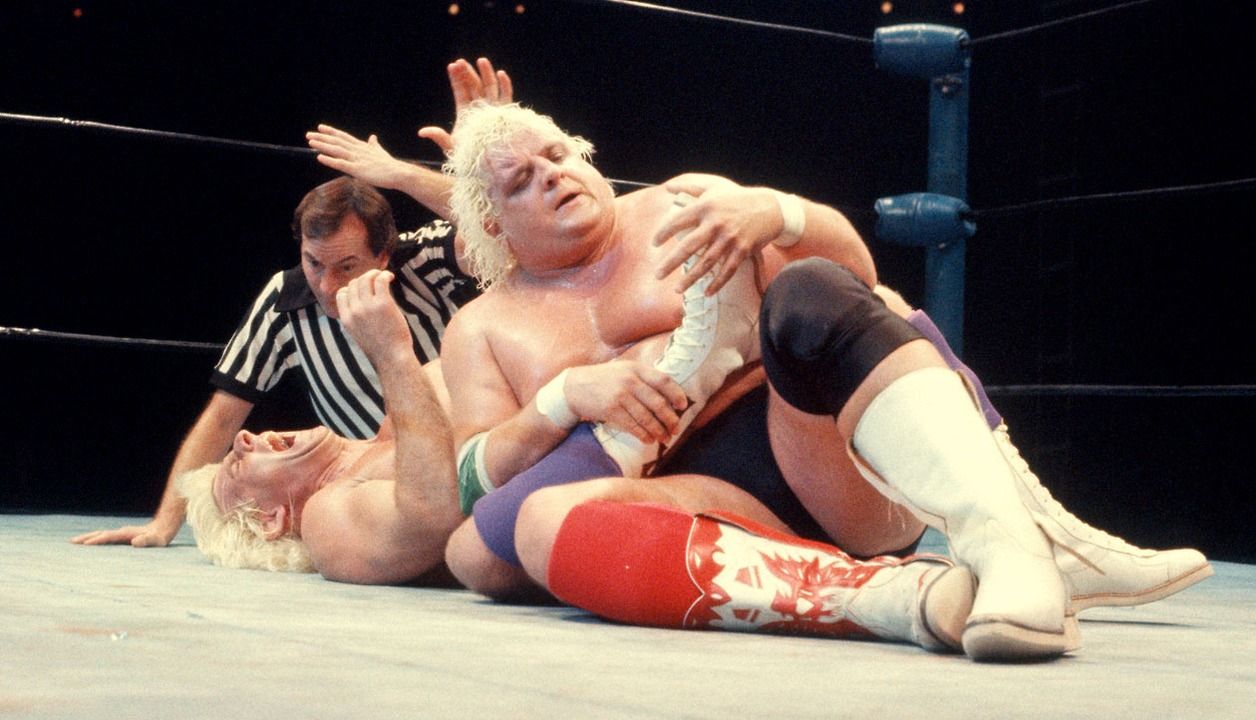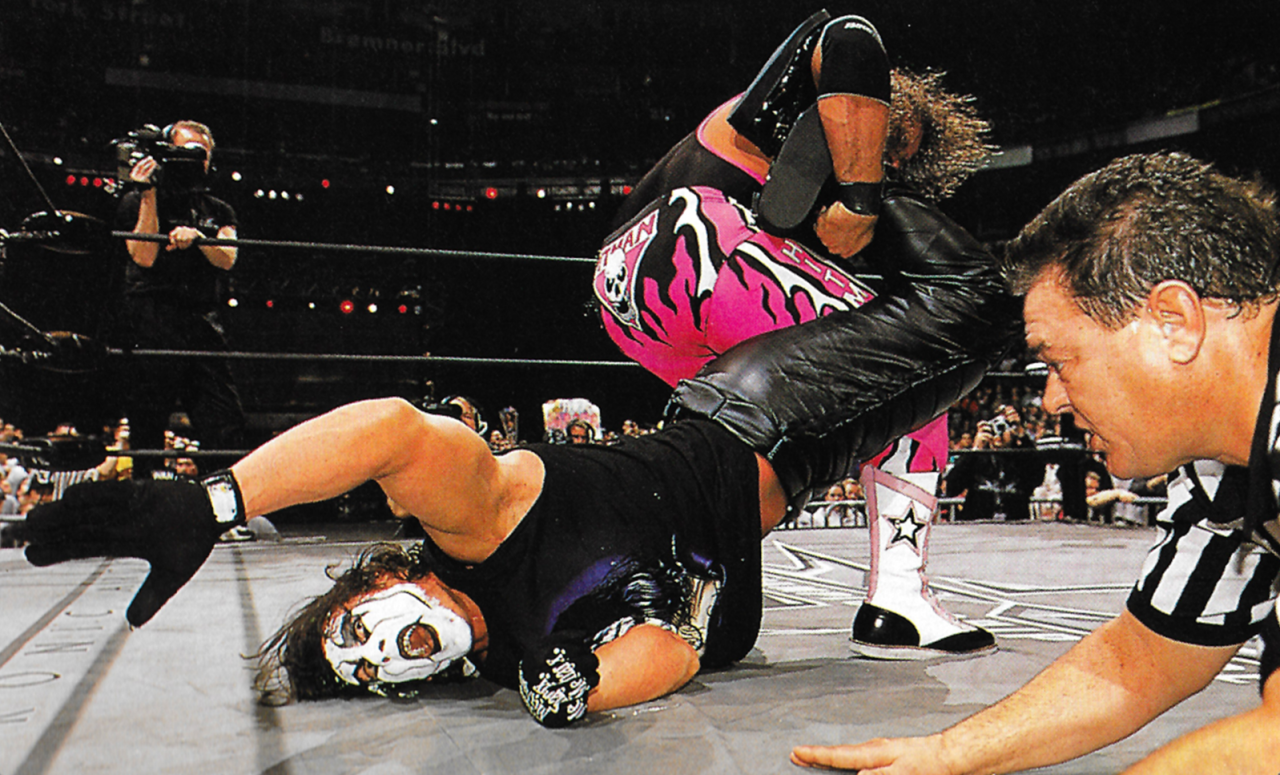There was a time when WWE and WCW were the clear cut top to wrestling promotions in the world. There was a time, even, when WCW was pretty clearly number one, at least in terms of audience reached, and depth of roster. In retrospect, most wrestlers, critics, and fans of the day seem to agree that WWE offered the better product—better long-term storytelling and execution, a better ability to build stars. Still, there were elements of WCW that worked, though, and that were undeniably influential on the wrestling world around them, including WWE.
While a unique set of circumstances, including Ted Turner’s deep pockets, Eric Bischoff’s visions, and the depth of talent available at the time facilitated WCW’s surge in the mid-to-late 90s, there are elements of the company business model that just plain made sense. Bischoff cut costs by taking WCW off the road and filming from a studio in Florida while they built up their product, and later implemented the nWo game plan pretty ingeniously to surprise viewers and hook them from episode to episode. Meanwhile, Turner’s willingness to not only bankroll the company, but give it a primetime slot on a major cable network to air live broadcasts pushed interest in the business to unseen heights. Over time, we’ve seen WWE toy with some of these practices and seen smaller companies like TNA take ideas more aggressively and run with them.
So, there are parts of WCW worth stealing, yes. The company was far from perfect, though. It’s business model and Time Warner’s disinterest in the 'rasslin business may have been insurmountable, but certain poor creative and personnel choices didn’t help matters. This article looks back at eight aspects of WCW that WWE steer clear of, and seven management ought to consider revisiting.
15 15. Bury: Celebrity Over-Involvement
Wanting celebrities involved in professional wrestling makes sense. Celebrities draw mainstream attention and thus widen the audience. Moreover, there’s long been a sense of celebrity credibility, under the thinking that if this professional athlete or actor or musician is involved in wrestling, you shouldn’t be embarrassed to like it.
WWE brought in celebrities before WCW, including making Mr. T a cornerstone of the original WrestleMania and the early days of Hulkamania. WCW pursued celebrities more aggressively, though, booking not only professional athletes like Kevin Green, Karl Malone, and Dennis Rodman into angles, but also later booking talk show host Jay Leno into a main event match, and even having David Arquette win their world championship.
WWE loves its celebrities, too, but would be well advised to stay the course in restricting celebrities to either non-wrestling roles, or participating in lower stakes situations. Some recent usages have walked the line, like using Rob Gronkowski to determine the outcome of the Andre the Giant Memorial Battle Royal and Jon Stewart having an impact on WWE and Tag Team Championship matches at two SummerSlams. Just the same, WWE seems to have a better sense of what it’s doing and not crossing over to absurdities or gratuitous dependence on celebrity drawing power.
14 14. Bring Back: BattleBowl
The concept of BattleBowl was for randomly selected pairs of wrestlers to team together in makeshift combinations. After a series of tag matches, the victors would square off in a traditional battle royal to determine a winner. BattleBowl was featured at Starrcade for a spell, before becoming its own PPV for one year.
While BattleBowl, in and of itself, isn’t a mind-blowingly awesome concept, it is a fun enough, distinctive gimmick. Moreover, the concept lends itself very well to creating new rivalries based out of odd couple tag teams, forming new tag teams because the two guys were thrown together and end up succeeding, and setting up new top contenders based on who wins the final match. In an era when WWE is running at least one PPV a month, and often more than that, plus two live television shows a week, BattleBowl could be an entertaining diversion, and a break from more run-of-the-mill B PPVs that tend to run together.
13 13. Bury: Excessive Swerves
After Eric Bischoff conducted market research to find that wrestling fans really, really liked to be surprised, WCW leaned heavily into fast and furious face and heel turns, and screwjob finishes. The arrival of Vince Russo, late in the company’s run, did absolutely nothing to help this situation, as he was already notoriously inclined toward crash TV booking.
The occasional swerve is an exciting and important part of wrestling. Just the same, when they happen too much, it’s exceedingly difficult to build coherent characters and stories. Moreover, when there’s a turn on every show, it cheapens the value of any individual one because fans stop being shocked, but rather start waiting on the swerve.
When fans complain about John Cena and Roman Reigns not turning heel, despite their mixed reactions, this may actually demonstrate WWE’s wisdom—recognizing that it’s often in the long-term interest of the booking not to indulge in unnecessary turns.
12 12. Bring Back: The Spring Break Special Episode
It’s easy for episodes of Monday Nitro to blend together. WCW was running hard and producing three hours of live TV every Monday. Fans remember the big moments like Goldberg winning his first title, the Four Horsemen reunion, or Kevin Nash lawn-darting Rey Mysterio, but otherwise, even when the show was good, it can be hard to remember particular episodes.
You know what episodes fans do remember, though? The Spring Break episodes, aired live, with the ring elevated above a swimming pool in Palm Springs.
Yes, these episodes could be a bit silly, and often built toward the predictable spectacle of someone getting dumped in the water. But they were memorable, too, for the break from a traditional arena setting and for the distinctive, fun atmosphere they engendered.
While brand consistency is important, and WWE could easily waste resources trying to make every episode of Raw or SmackDown look distinctive, having an annual special episode or two like this could be a lot of fun for the fans.
11 11. Bury: Too Many Worked Shoots
In a worked shoot, a wrestler appears to break character and speak his true thoughts. The worked element comes in because these promos are actually scripted, or at minimum sanctioned by management. The most famous, and arguably the most successful example was CM Punk’s 2011 Pipebomb promo in Las Vegas.
WCW really liked its worked shoots. This is somewhat understandable based on the success of the realistic and gritty nWo, and a budding population of fans learning about backstage matters because of the Internet. Just the same, when its used too often, fans don’t think they’re watching a TV show breakdown on a worked shoot. Instead, they can read, at the least, tell that it’s part of the show and, in a worst case scenario, feel insulted that the company is trying to fool them.
By the late stages of WCW, Vince Russo in particular wrote or played an on screen part in a lot of worked shoots. It got to the point when commentators with no real storylines would get heated and tell fans what they were shooting. Not only was this insulting to fans, but it drew attention to the fact that most of the wrestling show was fiction, thus making it harder for fans to get lost in the dream of the show and get invested. WWE may have used the worked shoot a little excessively in the Attitude Era when they were still feeling out the concept, but has fortunately pulled back from it since.
10 10. Bring Back: The Four Horse(wo)men
One of the great institutions WCW inherited from the NWA Mid-Atlantic and Jim Crockett Promotions was The Four Horsemen. This elite stable was anchored around helping Ric Flair win and retain world championships. It was a formula revisited across time over a decade of time—not a continuous angle that over stayed its welcome like the nWo would become, but rather a group that’s specter always hovered because it could return as long as Ric Flair and Arn Anderson were around. Plug in Tully Blanchard and Barry Windham to assemble a stable of elite workers. Weave in Sid Vicious, Lex Luger, or Sting to build to an inevitable swerve. Add Dean Malenko or Chris Benoit to give the next generation of wrestling artisans direction and purpose on the bloated roster. The group was iconic, and membership in it offered prestige for most everyone involved.
WWE has walked a fine line in pushing Charlotte Flair, alternately leaning into her familial connection to Ric Flair and trying to let her pave her own way. Building a Four Horsewomen stable around her could be a fun way to play off The Nature Boy’s legacy without necessarily even having him involved. The women’s roster is deep enough now to cluster three other heels with Charlotte to serve as gatekeepers to get shots at her, besides letting them benefit from the kayfabe exposure of standing next to her and real life mentorship from one of the top female stars WWE’s ever had.
9 9. Bury: Assuming Everyone’s An Internet Fan
A fan base that commented on and exchanged backstage information about wrestling began to percolate toward the end of WCW’s run. While reading what fans had to say and keeping track of what sort of information was leaking made sense, WCW, grew a little too invested in programming around the Internet audience. They assumed the average fan was aware of whatever rumors were getting traction online, or knew about real life tensions between various personalities.
On occasion, this dynamic worked, like booking the return of Ric Flair and The Four Horsemen, and including Flair yelling at Bischoff—in large part airing very real grievances. Not only was real life tension between Flair and Bischoff well documented on the Internet, but it also fit wrestling storylines, so it didn’t come across as confusing for everyone. Contrast that with Jeff Jarrett laying down to let Hulk Hogan pin him at Bash at the Beach, to be followed by Vince Russo yelling into a microphone about Hogan abusing the creative control clause of his contract--a worked shoot way too dependent on fans following Internet rumors and ultimately warping storylines in an incoherent fashion.
8 8. Bring Back: Slow Burn Programs
A lot of WCW critics blast them for blowing or rushing through stories. There were a number of times when the company wasted first time dream matches on Nitro without any prior publicity rather than building to a big PPV payday. The company did have its moments when it played the long game, though, and did so to great success.
The prime example is Sting vs. Hulk Hogan and the nWo. At Fall Brawl 1996, tensions rose when Sting’s WCW buddies distrusted him, thinking he’d defected to the nWo. Sting sent himself into well over a year of exile, not wrestling on TV and hardly speaking a word, but rather haunting WCW and the nWo alike before he returned for the biggest show of 1997, Starrcade, to finally challenge Hogan for the world title.
No, the match itself didn’t turn out to be very good, but you’d be hard pressed to find a more highly anticipated match in the last 25 years. It worked because WCW was patient, and WWE could take a lesson from that in letting long storylines, and particularly big, first-time matches, simmer until they reach a true boiling point.
7 7. Bury: Over-dependence On Old Stars
When WCW started to compete with WWE in earnest, one of the big turning points was signing guys like Hulk Hogan and Randy Savage, then Scott Hall and Kevin Nash who’d been big stars in WWE. Star power draws, so it wasn’t a bad strategy, but in the process of pushing these guys along with main event mainstays like Ric Flair, Sting, and Lex Luger, the company either forgot or truly had no interest in building new top stars. Guys who had been organically rising through the ranks like Dustin Rhodes and Steve Austin quickly got lost in the shuffle.
WWE does a good job of protecting legends. In the last five years, they’ve generally been successful at protecting tip-top part timers like Brock Lesnar, The Undertaker, Goldberg, and The Rock to keep them special. Just the same, there’s a real argument to be made that the company has hit a lull in developing the next crop of main eventers, when prospective top guys like Dolph Ziggler and The Miz scarcely got any face time with these legends, and guys who did like Kevin Owens and CM Punk got crushed.
Yes, WWE has built up some new stars like Roman Reigns and Seth Rollins, but the company would be well served to remember the degree to which WCW generally stagnated because of an over-dependence on old stars.
6 6. Bring Back: Campy Sets
In the early 1990s, when WCW expanded to broadcasting a PPV special every month, they started hosting such events against a backdrop of campy sets. The Halloween Havoc set looked a lot like an elaborate holiday display in someone’s backyard, and the Spring Stampede set tended to be a little hokey in leaning into a wild west façade. For all the fun we can poke at how these events looked, the sets did succeed in making events feel distinct and recognizable. While not every PPV needs an over the top theme, WWE could be well served to have some more fun with its aesthetics to make shows feel more special. The children and quirky adults who follow WWE most closely aren’t going to balk at a campy set look a little silly.
5 5. Bury: Putting A Glass Ceiling Over Cruiserweights
WCW is widely lauded for introducing a dedicated cruiserweight division that both gave smaller wrestlers an opportunity to get featured by a national promotion, and introduced a faster paced, more athletic style than American fans were accustomed to. Just the same, WCW also exposed its limitations with this division. While the cruiserweights had great matches, they rarely got the chance to work with anyone but each other, and when a truly special talent like Dean Malenko or Chris Jericho did manage to cross over to the heavyweight division, he was generally met with a glass ceiling of contending for the US or TV championship, or in the tag ranks.
WWE’s current Cruiserweight division has done some good, introducing talents like TJ Perkins and Rich Swann to the WWE audience, giving Brian Kendrick a spot on the contemporary landscape, and perhaps best of all revitalizing Neville as a terrific heel champion. Just the same, it’d be a shame to see every guy of that size pigeonholed into this division and not getting a true shot at the main event. For example, while Austin Aries may be too old now to get a proper push in the WWE main event scene, it’s unfortunate to think that he may have already peaked on the WWE stage, feuding over the Cruiserweight Championship.
4 4. Bring Back: War Games
War Games was a unique, violent spectacle with members of two opposing teams entering two rings surrounded by a double-wide cage at alternating intervals. The match could only end once everyone had entered and once someone from one of the teams submitted or surrendered. The gimmick would get bastardized with various rule changes, especially in its final three-team version with the title on the line, but those early versions in which the Horsemen and later The Dangerous Alliance, and heck, even a couple of nWo outings were brutal, different, and fun.
That WWE hasn’t brought the concept back by now, 16 eyars after WCW closed, suggests I may not happen. Triple H is a student of 1980s Jim Crockett Promotions, though, and has purportedly championed WWE running this match in the past. If he ever gets full control of WWE, it’s still possible he’ll declare it, “Time to play the War Games.”
3 3. Bury: Beating Dead Horses
Upon its launch, it’s hard to argue the nWo was anything but the coolest wrestling stable in wrestling history—cutting edge, chock full of star power, and fresh in terms of mainstream US-based wrestling.
But that was 1996. The angle was still running in 1999, and after a brief hiatus, got revived for the nWo 2000. While there is value in long term storytelling with great continuity, the stable grew into far more of a booking crutch and an object of inertia than a creative story. The general sense is that WCW found something that worked, and then just kept going with it on the hope and prayer it would keep working or come back around.
While WWE isn’t exactly known for radically fresh storytelling, Vince McMahon and company have generally shown better judgment than WCW when it comes to not leaning so exclusively on riding old horses into the ground. The temptation to do so may only increase; as of last summer, the company started producing more television than ever before with two live shows every week, one of them three hours long, plus an expanded PPV calendar. It’s vital to WWE’s long term success that they continue to show restraint and good judgment around knowing when to let stories ride and when to switch gears.
2 2. Bring Back: Starrcade
Starrcade was, in a sense, WrestleMania before there was WrestleMania. It was WCW’s flagship show, and remained the featured PPV up through the end of the company.
While concept of Starrcade wasn’t especially unique or grabbing te history and grandeur of the event—even its relatively majestic name—lent it a special feel. While WWE doesn’t necessarily need Starrcade, the end of the calendar year does feel as though it deserves a show more vaunted than Roadblock or TLC.
WWE shouldn’t’ look to use Starrcade to supersede WrestleMania, but rather, could use it as a vehicle to celebrate nostalgia and feel like a big stage to blow off rivalries. Either way, Starrcade was perhaps WCW's greatest creation outside of the nWo and its legacy deserves to live on.
1 1. Bury: Ruining Dream Matches
Make no mistake about it—WCW Nitro was exciting television. It wasn’t uncommon for an opening talk segment to set up a blockbuster main event, sometimes even a first time encounter between a pair of megastars. Fans stayed tuned to catch a special match at the end of the show.
For how loaded its roster was in the mid-to-late 1990s, WCW quite possibly had the potential to put on the greatest variety of truly epic PPV main events than any company ever had or will have. Instead, we got Nitro main events that rarely lived up to their three hours of hype, and PPVs that often as not felt lackluster in comparison.
To be frank, there aren’t dream matches like Hulk Hogan vs. Bret Hart or Sting vs. Randy Savage available now. With no promotions to truly rival WWE, most big matches between top veteran stars have happened in one form or another. The closest thing WWE does have access to is matches between top WWE guys and top talents from smaller companies and abroad. While these matches don’t have quite the sizzle of long-time WWE guys coming in to face long-time WCW guys, they nonetheless capture the imagination of hardcore fans. That’s a big part of why John Cena vs. AJ styles worked as well as it did, and why I hope WWE is patient in plugging special talents like Samoa Joe and Shinsuke Nakamura into dream scenarios.

